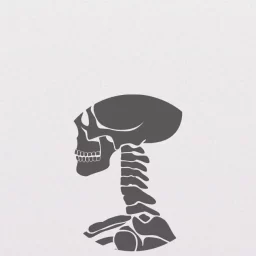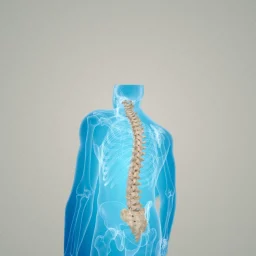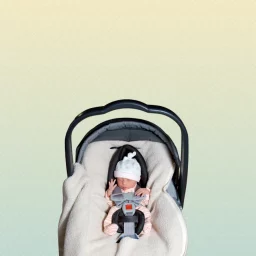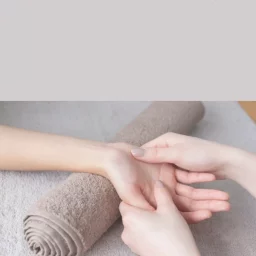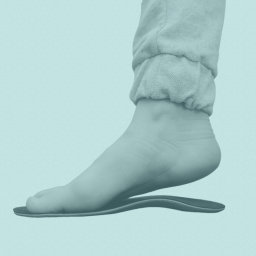Summer came and went in a flash! For many parents, the end of summer can be a happy time with their children heading back to school and returning to their regular routine. However, September can also be a stressful time for both parents and children as the “back to school” time can bring new challenges. School days can be long and the daily test of making sure your child has everything they’ll need for the day can be challenging. Doing so without overloading their growing spines can be difficult. If you and your children don’t know exactly how to choose, load, lift and wear their backpacks – these all-important accessories can be a literal pain in the back. Not to mention the neck, head, and shoulders.
Backpacks can Affect your Children’s Health
Carrying a heavily loaded backpack that is unevenly or improperly distributed can result in poor posture; and can even distort the spinal column, creating imbalances. This can cause muscle strains, headaches, back, neck and arm pain and even nerve damage.
For example, a heavy backpack carried on one shoulder forces the muscles and spine to compensate for the uneven weight. This places stress on the mid and lower back and may increase the likelihood of back problems later in life.
Prevention is Key
Here are six key pointers to help your children carry their backpack load comfortably and safely as they get ready to return to school:
1. Choose the Right Backpack
Forget leather! It looks great, but it’s far too heavy. Go for vinyl or canvas. Pick a backpack that has two wide, adjustable, padded shoulder straps, along with a hip or waist strap, padded back and plenty of pockets. Make sure the backpack fits properly and is not too snug around the arms and under the armpits. Also, pick a size proportionate to the wearer’s body.
2. Pack Properly
They’re not moving out! Make sure your children’s backpacks contain only what is needed for that day, and that the weight is distributed evenly. It’s a good idea to know roughly what each item weighs. The total weight of the filled backpack should be no more than 10-15% of your child’s body weight. Pack the heaviest objects close to the body, and place the bumpy or odd-shaped ones on the outside, away from the back.
3. Put the Backpack On Safely
It’s a good idea to help young children with this, at least the first few times. Put the backpack on a flat surface, at waist height. Slip on the backpack, one shoulder at a time, then adjust the straps to fit comfortably. Remember: when lifting a backpack (or anything) lift using your arms and legs and bend at the knees.
4. Clean it Out
Set aside some time before each week starts to completely clean out your child’s backpack. You will be surprised what can make its way into a daily trip. Remove any unnecessary items that are weighing down the pack. Once at school, children should be encouraged to use their desks or lockers to unload any material they will not need frequently throughout the day.
5. Wear the Backpack the Right Way
Both shoulder straps should be used and adjusted so that the backpack fits snugly to the body, without dangling to the side or down on the hips. Backpacks should never be worn over just one shoulder. You should be able to slide your hand between the backpack and your child’s back. The bottom of the bag should not fall below the belt line. The waist strap should also be worn for added stability.
6. Know when Something is Wrong
A backpack should be easy to get on and off. More than 50% of young people experience at least one episode of lower back pain by their teenage years. Research indicates that this could be caused, to a great extent, by improper use of backpacks along with poor studying posture.
If your child comes back from school complaining of neck pain, back pain, numbness or weakness in his or her arms and legs, be sure to visit your chiropractor or physiotherapist to prevent future problems. Visit us online or call our Byward Clinic at 613-860-8600 or our Glebe Clinic at 613-237-9000 to book a consultation with our team of experts.
Download Straighten Up Canada!
Low back pain and MSK conditions are the second leading cause of disability worldwide according to the World Health Organization. An increasing number of young Canadians are suffering from “iPosture” or “text neck” from the overuse of smartphones, and tablets, and poor studying posture. Did you know there is now an app for that?
Straighten Up Canada is the only free Canadian app that provides easy-to-perform posture exercises. When done regularly, these three-minute exercises can help improve your spinal health over time. Good posture prevents backaches and muscular pain, allows your body to use less energy for daily tasks, helps to decrease wear on joints prevents arthritis, and increases the flexibility and stress tolerance of your spine. Most importantly, good posture makes you look and feel great.
Get The App! The Straighten Up Canada app is available through the Apple and Google Play stores on your smart device.
Good luck to both parents and children this school year and don’t forget to pack it light, wear it right and straighten up!
For more information on prevention and wellness visit us online. If you or a loved one is experiencing discomfort this schoolyear book an appointment to schedule a consultation with our team of MSK experts. Visit us online or call our Glebe Clinic at 613-237-9000 or our Byward Clinic at 613-869-8600.




